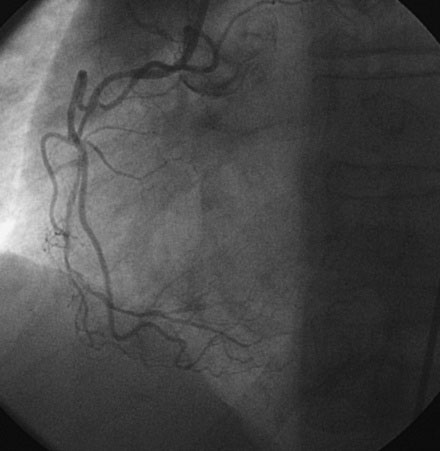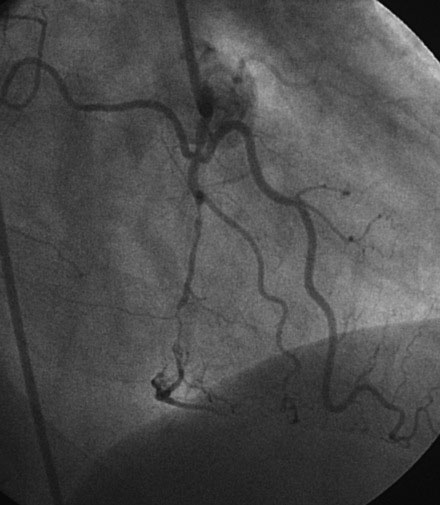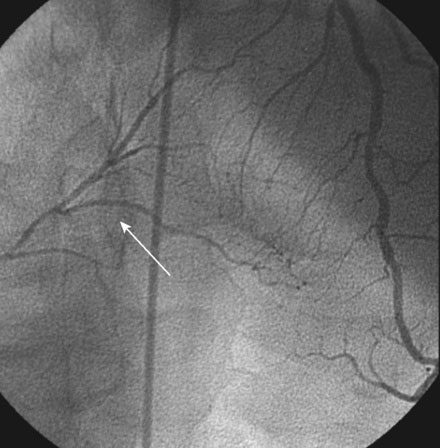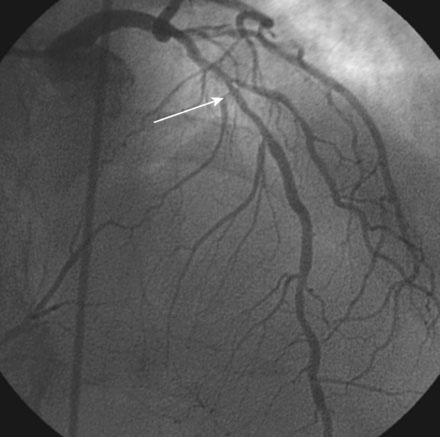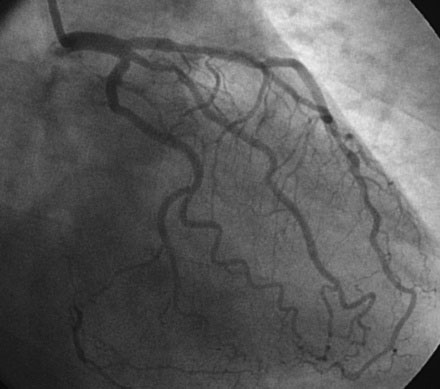CASE 55 Foreign Body Retrieval
Cardiac catheterization
Left ventricular function was normal. Coronary angiography demonstrated complex and multivessel coronary disease. The right coronary artery was essentially totally occluded in the midportion with some anterograde flow (Figures 55-1, 55-2 and Videos 55-1, 55-2). Although the distal right coronary artery appeared small, the distal right coronary was believed to be larger, based on review of the prior angiogram and from the collateral visible from the left coronary artery (Figure 55-3). A long, moderate lesion was noted in the left anterior descending artery (LAD) (Figure 55-4) and the circumflex system appeared to be without significant stenosis (Figure 55-5). To determine the significance of the lesion, the operator further evaluated the LAD by assessing fractional flow reserve. Using a pressure wire and an intracoronary injection of adenosine to achieve maximum hyperemia, fractional flow reserve of the LAD was 0.69 and thus represented a significant lesion.
He received 300 mg of clopidogrel the night before the procedure. The operator used bivalirudin as the procedural anticoagulant and began with the occluded right coronary artery. A floppy-tipped guidewire easily crossed the occluded segment and a 2.0 mm diameter compliant balloon was used to restore patency of the artery. The operator positioned and deployed two 2.5 mm diameter by 28 mm long sirolimus-eluting stents across the lesion. A residual stenosis remained in the proximal segment (Figure 55-6
Stay updated, free articles. Join our Telegram channel

Full access? Get Clinical Tree


